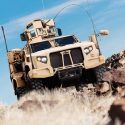Courses help growing railroad industry stay on track
With merely one gallon of fuel, a train can move one ton of freight 400 miles.

Despite such astonishing fuel efficiency, the railroad industry shrank dramatically in the 1970s when highways became the preferred form of transportation. Today as fuel prices soar, trains again are becoming an attractive method for moving freight — and people — across the country.
As railroads make a comeback, so must railroad engineers. Currently, there are few undergraduate or graduate programs in the United States that teach engineers to design, build and maintain railroads that are safe, efficient and consumer-oriented.
However, the University of Wisconsin–Madison offers a comprehensive continuing education program. Directed by engineering professional development professor emeritus C. Allen Wortley, the UW–Madison Railroad Engineering Program began in 2001 when Wortley developed a survey course that covered civil engineering fundamentals of the rail industry. More than 120 people from around the country came to Madison to sit in, and Wortley knew he was on to something.
“America’s prosperity depends on a sound transportation infrastructure,” he says. “We must increase our commitment to rail — a key transportation component — to compete, reduce problems on our highways and skyways, reduce air pollution, save energy and meet future needs.”
That initial course now has expanded into eight annual offerings that last two to three days each. Taught by experts from the rail industry, the courses feature a variety of topics, including highway-rail grade crossing safety, railway train control and signaling, rail transit passenger systems, freight railroad operating practices, and track design and maintenance. The most recent course covers railroad bridge engineering.
The National Center for Freight and Infrastructure Research and Education (CFIRE) at UW–Madison offers scholarships for government officials who attend the courses. CFIRE director and UW–Madison civil and environmental engineering professor Teresa Adams says the courses address an important need. “We need to provide more professional capacity for railroads,” she says. “Lately, there has been a push from railroads to renew their workforce.”
Ron Adams is one of the students who has benefited from the UW–Madison Railroad Engineering Program. “It’s given me things to think about as I manage the state’s rail programs and provide ideas about how to do things better,” says Adams, who is chief of the railroads and harbors section of the Wisconsin Department of Transportation.
He has been a student in two courses and has lectured at several more. “There is a lot of good material in the courses, and I find myself looking back at the class notebook periodically,” he says.
One topic of interest in the United States is commuter rail systems. While the country has a strong freight transportation system, commuter rail is not as common or well-developed as in other countries.
That could change if other schools do as Wortley hopes and launch their own railroad engineering programs. He would like to see several universities in the United States and Canada develop their own railroad research and education.
“Although ‘railroading’ is nothing new, there are new problems to be solved with new materials, methods and technologies,” he says.
UW-Madison may be the first to adapt Wortley’s model to undergraduate education. CFIRE is currently developing railroad components for introductory civil and environmental engineering courses.
Tags: business, engineering

